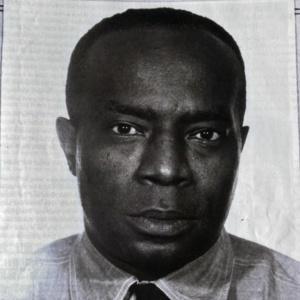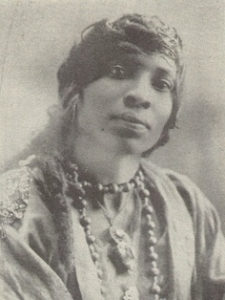The early story of Stephanie St. Clair, aka Madame Queenie, life is a mystery. One thing we know for sure is she was born on the French east Caribbean Island of Guadeloupe on December 24, 1897. She was educated and could not only read and write, but spoke fluent French as well as Spanish, which was rare in those days especially for black women. St. Clair arrived in Harlem around 1912, and settled into the black community in Harlem on the northeast side of Manhattan.
She was known to be pretensions, sophisticated and educated. St. Clair could also hang with the best of them. She wasn’t afraid to give someone a piece of her mind in profanity while exhibiting her fierce nature in rage. St. Clair’s well-known temper was often present when dealing with her rivals such as the police and intolerant business owners that intruded on her turf. Around the age of 23, St. Clair started a numbers racket designed for the African-American community. While it made her rich beyond her wildest dreams it also made her a target for other mobsters and the police.
In time, St. Clair, was clearing a quarter million dollars a year and employed hundreds of people. In a period of time where several banks would not accept black customers Stephanie St. Clair became involved in policy banking, among her many other illegal ventures, and helped black citizens living in Harlem to invest their money. She was the most prominent and successful female banker in Harlem in the 1920s.
When the repeal of Prohibition happened on December 5, 1933, mobster’s alcohol profits began to plunge and they needed a new source of income. One mobster in particular set his sights on Harlem. Dutch Schultz was one of the first to make a move on Madame Queen’s Territory. Schultz had earned his reputation for brutality whenever he lost his temper. Nevertheless, he found his match in dealing with St. Clair. This sistah wasn’t about to lay down, roll over and take it for nobody and when Schultz began making phone calls threatening her, kidnapping and murdering her men her revenge was that of any gangster in her time: swift and brutal.
In an attempt to intimidate St. Clair into handing over a portion of her profits Schultz decided to send one of his minions over to her establishment… big mistake! When the poor schmuck got there, St. Clair herself pushed the poor bastard into a closet, locked him in, and called in four “Deebo” (Friday movie Character) sized bodyguards to “take care of him.” To add insult to injury, she attacked and destroyed the storefronts of “Any” business that ran Schultz’s betting operations. Her best move was when she tipped off the police about Schultz’s operations – which led to them raiding his clearing house, arresting 14 employees, and seizing a million – how about them apples! She even bragged about it in the press! Schultz’s biggest enemy, however, had yet to reveal himself (a little Godfather humor for ya).
His biggest headache would come in the form of a lawyer, prosecutor, and politician by the name of Thomas Dewey. You see, Dewey had a hard on for mobsters, Schultz being one of them. As payback, Schultz tried to get permission to kill Dewey. When the Commission told him, no Schultz disregarded their decision and made an attempt anyways. For his defiance, the Commission ordered his murder in 1935. Unable to fight the urge to have the last word, like a typical black chick, she dropped everything and rushed a telegram to his hospital deathbed. It simply said, “As ye sow, so shall ye reap,” a Bible verse from Galatians 6:7. She signed it “Madame Queen.”
How cold blooded was that? After the Schultz problem was resolved, St. Clair kept clean and away from police. Eventually, she handed off her business to Ellsworth Raymond Johnson — known as “Bumpy” Johnson her chief enforcer who made a deal with Lucky Luciano and in return had a percentage tossed back at him. Despite handing her domain over to Johnson, St. Clair was still wealthy. She went on to start a new chapter in her life by working in human rights in her community. St. Clair also married a man by the name of Sufi Abdul Hamid who claimed to be ancient royalty, but was later discovered to be nothing more than a con artist.
had a percentage tossed back at him. Despite handing her domain over to Johnson, St. Clair was still wealthy. She went on to start a new chapter in her life by working in human rights in her community. St. Clair also married a man by the name of Sufi Abdul Hamid who claimed to be ancient royalty, but was later discovered to be nothing more than a con artist.
She ended up shooting the fraud. At trial, St. Clair insisted that if she had wanted him dead, he would be dead and that the gun accidently went off yet the jury didn’t see it that way. She was found guilty and sentenced to prison. Upon her release, she continued to be an advocate for reform particularly in the black community, never returning to her criminal empire.
She died one year after her protégé Ellsworth “Bumpy” Johnson in December 1969.
[si-contact-form form=’3′]

 June 8th, 2017
June 8th, 2017  CEO
CEO 
 Posted in
Posted in  Tags:
Tags: 



